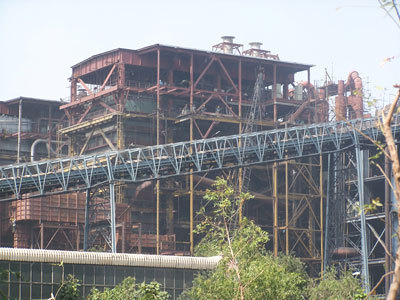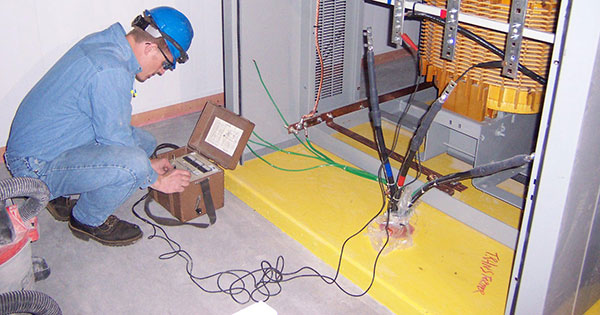ELCON ENGINEERS P. LTD.
Featured Products
Highest quality standards are achieved through the implementations of latest technology, decades of experience and everlasting moral values , which have helped us to retain our customers as well as multiply them.
Welcome to ELCON ENGINEERS P. LTD.
Power System Study Network Analysis And Solutions

Feasibility Study and Concept Design Reports
We can conduct onsite and offsite Feasibility study and prepare the concept design reports as required basis. Possible scenarios can be as under:
- Power Hook-up arrangements
- Nuisance tripping problems
- Tripping of Generator for Grid side disturbances
- Power import and export schemes
- Cable sizing
- Power factor improvements
- Temporary power schemes
Load Flow Study
Load Flow study is conducted to examine the adequacy of equipment ratings and evaluation of load demand of plant against the total available Power. Assessment of Voltage profile, Power factor and Thermal profile of network under different operating philosophy of plant and for various load contingencies. Populate Alerts if any Overload or Load mismatch observed. Provide basic guidelines for future expansion of plant if desired. Calculations are performed using Newton-Raphson or Fast Decoupled or Accelerated Gauss Seidel method.
Simulation of Load flow analysis illustrate Bus voltage and power factor, Current, MW and MVAR flow through each branch of the network and report the total load loss throughout the network.
Short Circuit Analysis
Short circuit study is conducted to ensure the adequacy of Duty of electrical devices under fault condition and also to establish the minimum as well as maximum fault level of the system at various voltage levels for Relay co-ordination duty. Populate Alerts if any violation in rated fault level of equipment observed. Fault calculations are done in compliance with the latest editions of the IEC-60909.
Simulation of Short circuit analysis illustrate the Fault current values for 3-Phase, line-to-ground, line-to-line and line-to-line-to-ground faults on each bus of the network along with possible phase displacement. It also shows the individual contributions from Generators, Utility power source and motors and the AC fault current decrementing curves.
Motor Starting and Acceleration Study
During the motor starting period, the starting motor appears to the system as small impedance connected to a bus. It draws a large current from the system, about six to eight times the motor rated full load current, which therefore causes voltage drops in the system and imposes disturbances to the normal operation of other system loads. Since the motor acceleration torque is directly dependent on motor terminal voltage, in some cases the starting motor may not be able to reach its rated speed due to extremely low terminal voltage. This makes it necessary to perform a motor starting analysis for 1) To investigate whether the starting motor can be successfully started under various load contingencies 2) To see "How seriously the starting of respective motor will impede the normal operation of other loads in the network"
Simulation of Motor starting and acceleration analysis illustrate exclusive load flow results of the instant of starting of motor and depict motor characteristic plots which includes Current drawn by motor, Reactive power requirement, Slip, Motor torque, Load torque, Acceleration torque versus time and also shows impact on Power sources through plots like Terminal voltage, Bus Voltage, Reactive power supply, Real power supply, Current and Power factor versus time.
Electrical Power Transient and Dynamic Stability Analysis
Simulation of power system dynamic response and stability limits before, during, and after system transients such as Severe faults, Loss of Generation or Loss of excitation, Loss of load which is significant in the design and operation of the system. The program accurately models dynamic characteristics of a power system, implements the user-defined events and actions, solves the system network equation and machine differential equations interactively to find out system and machine responses in desired time domain. We can use the study results as inputs to determine the Generator Start-up, Transient behavior and Stability assessment of the system, Critical clearing time, Grid islanding settings, Load Shedding, Fast Bus Transfer scheme and Protective device settings.
Simulation of Transient and Dynamic stability analysis illustrate deviations in Power angles, Speed, Real and Reactive power outputs of Generators, System electrical frequency as well as the voltage levels of the buses. Re-acceleration of network Motor loads can also be ensured through simulated results.
Power System Protection - Relay Co-Ordination Study
Analysis of adopted protection schemes which include adequate system grounding methods, appropriate Selection of protective relays and validation of protection schemes. Any major discrepancy of protection system will be identified and where applicable, methods of improvement will be suggested. Evaluation of settings of protective devices used for Overcurrent and Earthfault protection in order to adequately protect the system against short-circuits and overload, optimize the discrimination between fault and abnormalities and set proper time grading are part of Relay co-ordination study. Scheme design
Plotting of Time Current Characteristics (TCC) along with Circuit route from fault location to source with unique relay Id and simulation of sequence of circuit breaker operation for respective fault.
Branch Switching Stability Analysis Using Electro Magnetic Transient Program
Switching of certain huge loads like very large Power transformers or Rectifying transformers, Capacitor banks and Series reactors can severely impede the normal operation of running load and generation due to their very high charging (Inrush) current and drastic demand of reactive power at the instant of switching. Switching of such loads takes place typically within less than time 100ms of time and falls under category of Electromagnetic transients. It is very essential to ascertain the stability of system and in particular the response of AVR and Governor of Generators under such switching events which can be only carried out using Electro Magnetic Transient Program (EMTP).
Simulation of such switching Transients illustrates deviations in Power angles, Speed, Real and Reactive power outputs of Generators, System electrical frequency as well as the voltage levels of the buses.
Arc Flash Analysis
The Arc Flash Analysis module incorporates the latest software technology available to investigate a worker's potential exposure to arc flash energy, which may be required for the purpose of injury prevention and determination of appropriate levels of Personal Protective Equipment (PPE). The incident energy and flash protection boundaries are determined based following standards
- National Fire Protection Agency (NFPA) 70E 2012
- IEEE Standards 1584-2002, IEEE 1584a 2009 and IEEE1584b 2011
- CSA Z462
Ground Grid Design Assessment
The safety of personnel is compromised by the rise in the ground potential of grounded structures during unbalanced electric power faults. At such times, humans touching grounded structures can be subjected to high voltages. However, the magnitude and duration of the electric current conducted through the human body should not be sufficient to cause ventricular fibrillation.
The Ground Grid Design Assessment calculates required maximum Ground Resistance Rg, Step and Touch potential values at each point of locations of plant or substation, GPR, Reflection Factor K, Derating Factor Df and Maximum Grid Current. It also populates warning information Report of Potential Profiles and Plots for Absolute/Step/Touch Voltages. Thus safety of personnel is achieved. The Ground Grid Systems module utilizes the following four methods of computation.
- FEM - Finite Element Method
- IEEE 80-1986
- IEEE 80-2000
- IEEE 665-1995
Power Quality Management – Harmonic Analysis
Applications of Electronic and semi conducting devices like VFDs, UPS, Rectifiers / Convertors and Invertors are increasing day by day in industrial plant which are dominant source of current and voltage Harmonics. Over the period this influences a spoiled quality of power and as an ultimate result this shall lead to the false overloading of equipments, failure of equipments and burning of motor winding.
The Harmonic Analysis module provides the best tool to accurately model various power system components and devices to include their frequency dependency, nonlinearity, and other characteristics under the presence of harmonic sources. This module has two analytic methods, Harmonic load flow and Harmonic Frequency Scan, which are the most popular and powerful, approaches for power system Harmonic analysis. By using those two methods in combination, different harmonics indices are computed and compared with the limitations as per IEEE-512-1992 standard for Harmonics level in industrial plant. Results of Harmonic analysis can be used to design adequate Harmonic filter for the respective pre-dominant contents.
Power System Solutions
Executive summary report which narrates the overall summary of various studies conducted and analysis made out of all study results. This also highlights the immediate observations and recommendations to be implemented for betterment of the system, reliability of power and enhancement of protection system. The possible range of solutions that can be provided typically be as following or as applicable basis:
- Implementation of appropriate methodology of System Earthing
- Supply, Installation and Commissioning of Protective Relays, CBCTs, ICTs, NGRs, Capacitor banks, Series reactors and other items on requirement basis
- Design and Detail engineering, Relay selection, Control and Relay panel, Protection setting calculations, Logics and Algorithms of Unit Protection schemes used for protection of Generator, Large Power Transformer or Rectifying Transformer, Grid Islanding, HT Motor and Current Differential used for Lines or Cables as applicable.
- Retrofitting and Refurbishment solution by providing Numerical Protection Relays for Generator, Transformer, Plain feeder, Motor, Current differential and Grid islanding protection schemes on EPC basis
- Intelligent Load Shedding Scheme Logics and Priority load list
- Synchronization scheme logics and synchronizing panel
- Comprehensive solution of Power Management System
- Solutions for Power quality and Power factor improvement on EPC basis
Our Vision
* To embrace new technologies and methods. * To give unsurpassed products and services to the clients. * To constantly look for improvement and changes.








